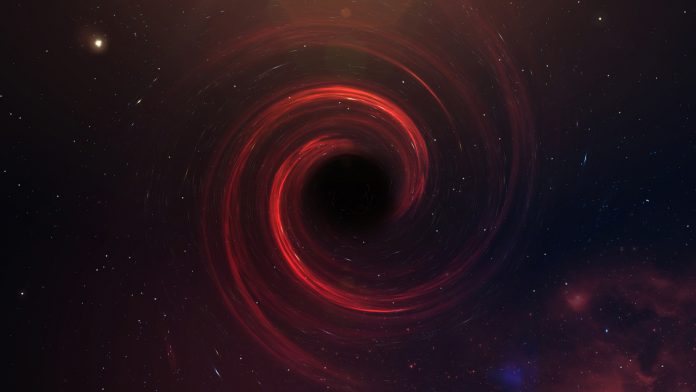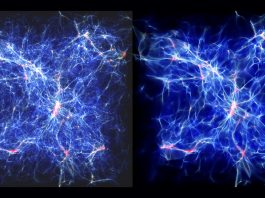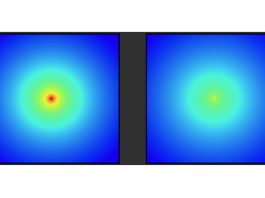Scientists led by the Kavli Institute for the Physics and Mathematics of the Universe have established the origins of solar-mass black holes and their connection to dark matter.
Solar-mass black holes are believed to have formed in the early Universe (primordial black holes) or ‘transmuted’ from existing neutron stars. Some black holes could have formed in the early Universe long before the stars and galaxies formed. Such primordial black holes could make up some part of dark matter.
If a neutron star captures a primordial black hole, the black hole consumes the neutron star from the inside, turning it into a solar-mass black hole. This process can produce a population of solar mass black holes, regardless of how small the primordial black holes are. Other forms of dark matter can accumulate inside a neutron star causing its eventual collapse into a solar-mass black hole.
A new study, published in Physical Review Letters, advances a decisive test to investigate the origin of solar-mass black holes. This work was led by the Kavli Institute for the Physics and Mathematics of the Universe fellow Volodymyr Takhistov.
Predicting the origins of black holes
The study suggests that transmuted solar-mass black holes that are being devoured by dark matter should follow the mass-distribution of the original host neutron stars. Since the neutron star mass distribution is expected to peak around 1.5 solar masses, it is unlikely that heavier solar-mass black holes have originated from dark matter interacting with neutron stars. This suggests that such events as the candidate detected by LIGO, if they indeed constitute black holes, could be of primordial origin from the early Universe and thus drastically affect our understanding of astronomy. Future observations will use this test to investigate and identify the origin of black holes.
The same international team of researchers has previously demonstrated that disruption of neutron stars by small primordial black holes can lead to a rich variety of observational signatures and can help us understand such long-standing astronomical puzzles as the origin of heavy elements (e.g. gold and uranium) and the 511 keV gamma-ray excess observed from the centre of our Galaxy.









